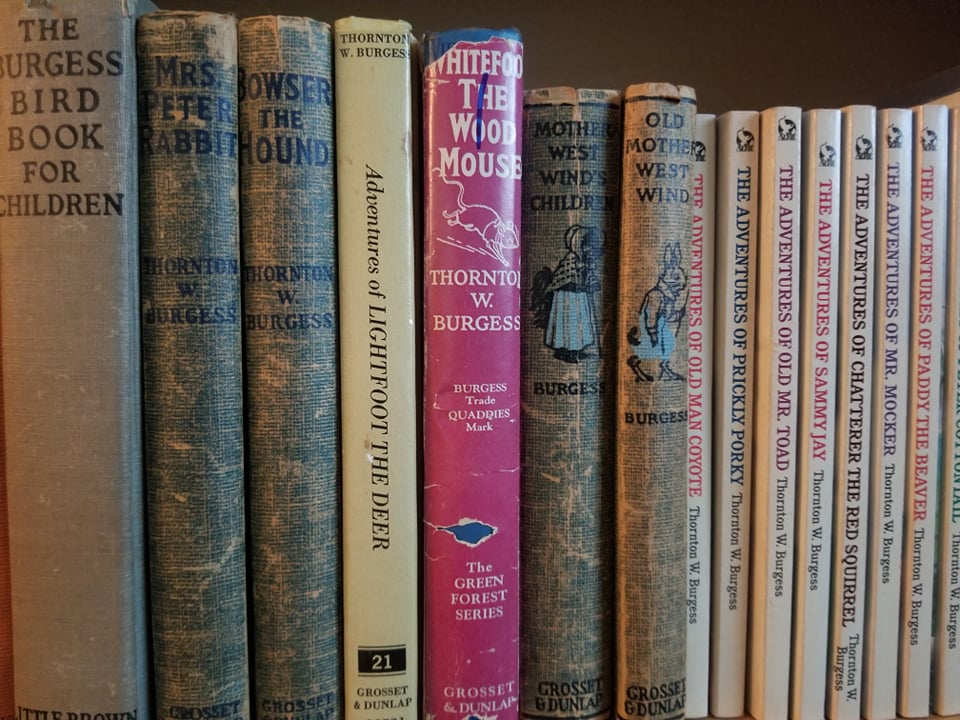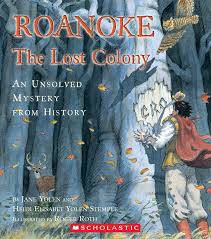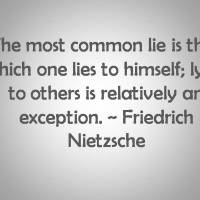One More Year of Reading
It has been a year since I last wrote a blog post. The choir girl in me starts humming “Five hundred twenty-five thousand six hundred minutes” as soon as I think the words “a year.”
I don’t measure my years in daylights or sunsets or cups of coffee, although I observe, draw, and inhale many of them. This last year was measured in inches grown by my thirteen-year-old, new words spoken by my two-year-old, and the birth of a new baby… and, as always, a lot of books.
After my last post, I re-read the Hunger Games series. I still like it. I hated the prequel fourth book. Naturally, after spending a lot of time discussing totalitarian governments with my middle schooler, I read Larry Correia’s In Defense of the Second Amendment. Everyone should give that one a go. Correia is great.
I read a lot of crap while I was pregnant, at least in the barfing phase. I started purging my shelves of things that I had accumulated for free or cheap over the years but never read. If you haven’t been in the mood to read it in a decade, four moves, and as many 1,000 volume plus purges… you probably don’t want to read the book. I’ve been reading a lot of those books, and giving them away. I’ve donated about a box of books per month this last year, and I plan to keep going. We have exactly the number of bookshelves we will ever have in this house and they are beyond full. Now I curate. I replace the chaff with the gold. I have a lot of “gold” already, I have already decided I do not have the time, patience, or meanness left to write all the bad reviews I have floating in my head. This is not the season of cotton candy fiction, and it shows in my star ratings. This is a season of meat, the books I never want to let go. Still, I’m alternating between reading things I might want to let go with things I know I never will, and organizing my overcrowded shelves of chaos as I do.
In July, two months before I had my third baby, I discovered The Literary Life Podcast. I also discovered that the majority of the books they cover I had either already read before or already owned. I started listening to the podcast voraciously. Around the third trimester of all my pregnancies, my mind begins to “itch,” I start studying anything and everything. My mind can’t be still. I have to learn when there is a baby on the way. The truth is, I’m perpetually desperate for a book club or to go back to school and earn a few useless degrees, and the Lit Life group is the next best thing.
I loved Gaudy Night by Dorothy L. Sayers. It was not one of the Lord Peter Wimsey’s that I had read before the podcast, so that was a real treat. I started re-reading all my G. K. Chesterton titles because they talk about him quite a bit. I was teaching Saint Francis of Assisi, so I read Chesterton’s biography. Surprised by Oxford by Weber came up, so I had to read that one as well. I still haven’t seen the movie, but I would like to. I moved all my Inklings-related titles to my bedroom, so they’d be closer to me when I was nursing. I’ve now listened to over a hundred podcast episodes.
The baby came nearly a month before she was due. She’s perfect. She’s an infant wrapped in a blanket of E. M. Forster stories, C. S. Lewis essays, and Shakespeare plays. My oldest helps set the tone of our homeschool as we study together, and the two-year-old interrupts to have us read to him as well. We are a house of books, and it is my dream come true. I’ve been reading something by Madeleine L’Engle at all times and decided to do it until I’ve read all her work.
I bought Cindy Rollins’s Morning Time book, and have implemented a more consistent and orderly way of doing ours. Her thoughtful reminders and lists have been a blessing. That led to us also using her Hallelujah book for advent. It’s truly lovely and I have enjoyed incorporating fine arts into our worship this way, as I always thought they should go hand in hand.
I will try to write more than once a year. As it is, this post is hardly about anything at all, other than I noticed it was February 15th and that I hadn’t written one since last February 15th. I will try to write something thoughtful about the books I have read another day, but I will admit it isn’t my priority these days. I keep this blog because I have always kept it, but my children are in my care for only so long and I am a homeschool mom. We have reading to do. When I remember, I will share it with you.
Cross-Denomination Book Club
One of my favorite things is how the Body of Christ works in many places at once. I love when four or five churches in a community are moving to do the same thing at the same time. I love when men and women of God are studying and praying over the same topics, separately but together. I love pondering the idea that the Lord never does just one thing at a time and He instills passions into His people in ways that work together for His purpose, even if we’re not paying attention.
These are the things I enjoy paying attention to most.
Several years ago, this point was driven home to me when my church studied Blackaby’s Experiencing God. It is one of my favorite studies to recommend to people of all ages, and it was the first one my current husband and I walked the children through when we first began the habit of family bedtime bible study. (Training up our children in the way they should go is very important to me and I am so grateful to have a husband who leads us, rather than one who abuses.) Prior to my remarriage, even when married to my first husband, bible study was an activity kiddo one and I did alone. This “new” habit (two years and counting) has been refreshing.
But while we study as a family, I also find it encouraging to study with other women, both from my church and others. I enjoy being a part of online book clubs, but even more I enjoy discussing rich books with my personal friends. I’m not talking about sitting in a circle drinking wine and arguing over literary merits. I’m talking about each family reading a book, finding biblical truths in it, and sharing those truths with their friends. I’m talking about Christians who go to Baptist churches, Catholic churches, Lutheran churches, and more, all discussing God’s Word and books that point us to bits of God’s Word we may have missed.
My desire to write this particular blog post was born of two books and a series of interwoven events.
A woman at church passed me a note suggesting I read a book by Rosaria Butterfield called The Gospel Comes With a House Key. I got home from church, looked it up on Amazon, saw that it was backordered but hit the button anyway and largely forgot about it.
Then, The Other Half Of My Brain, as I call her (my college roommate) was reading Habits of the Household by Justin Whitmel Earley with a group of women in her town five hours north of me. She messaged me saying she was pleased with the contents, I should check it out. She had also shared it with her sisters, who all live elsewhere. I read it, I loved it! When I shared it with my friends, I told them what The Other Half Of My Brain had expressed to me: It’s full of fantastic tidbits that you can implement into your life with 45 spare seconds. Most self help books are all about waking up an extra 45 minutes here, or take an hour and add this to your week, etc. Earley, on the other hand, wrote a book full of biblical truths and household wisdom for tired, busy people.
“My greatest hope,” Earley writes, “is not that you sit down in a quiet place and read this book alone. […] rather, that you read snatches of it between toddler fits and soccer trips. I hope that you nod off during a chapter because the baby was up last night, and get distracted at a good part because your twelve-year-old drops a surprise question about sex.”
He goes on to say that he hopes you read it with your spouse, that you skip around, that you use what you can and ditch what doesn’t work. Make notes in it, spill coffee on it, etc. This book is truly a tool, something that I try to remind everyone about all books. It’s about raising kids to follow God in the midst of a chaotic life.
The thing that struck me most is how useful it could be for grandparents as well, even though it isn’t marketed for them. My mother-in-law proved this point without even knowing when shortly after I finished reading this book she added to the Sunday lunch liturgy for the children. Later that week I shared with other grandparents I knew, and slowly more people in my extended circle were reading the same material and implementing elements of Earley’s recommendations in their daily lives.
In Earley’s book he includes lists of additional resources. Lo and behold, one of the books he refers his readers to is The Gospel Comes With a House Key. I was still waiting on my copy when another friend of mine was toying with starting a book club at her church and one of the potential members recommended it as the first book. I was so excited, “I have that book on the way to my house, I’ll read it with you!” In the meantime, I discovered some friends from a completely different circle of people who had also already read Earley’s book.
Aside from an actual marketing campaign, these two books are making the rounds in the Christian communities I’m associated with and this excites me––not in a part of the in-crowd or bandwagon way. I think when books are leapt upon as more useful than the bible by church groups, trouble follows (think the 1990’s and I Kissed Dating Goodbye.) I don’t think anyone should pounce of Earley’s or Butterfield’s books and put them on pedestals above or even alongside their bibles. However, reading the books with fellow Christians, praying about truth revealed, and discussing the merits and flaws of each idea presented is an exciting activity, especially when it’s not even happening in a formal way. There is no “gather in the library at six, password candles,” happening here. It’s just people reading and casually discussing the books that have impacted their lives that week in passing. You’re welcome to join the club.
A Year of Homeschooling Peacefully in the Ancient Times
The school year began, for me, in a bit of chaos. My son was born over the summer. My mother had died. In addition to my newborn son, I had two extra children in my household. I was overwhelmed by the impending doom of our co-op. I could sense it coming, but I honestly thought it was a year or two off and I was committed to giving it my kiddo’s fifth grade year before bailing, believing that the proverbial poop would hit the fan a few months after my departure. (It hit sooner.)
Still, after the children went back to their own home. The co-op dissolved and something new began… we found ourselves homeschooling through the ancients in our own little Pax Romana. We declared this our year of homeschooling in peace and it has been phenomenal.
As usual, we began our dive into Ancient history with the Epic of Gilgamesh. After years of reading the picture book trilogy by Ludmila Zeman, it was time to upgrade to a a more “grown up” version of the story. Gilgamesh the Hero by Geraldine McCaughrean was a perfect bridge for the dialectic stage, from elementary to the full translations of high school. Kiddo was struck by the subtle differences, the pieces that make it suitable for older readers, but not for younger ones. As a child who doesn’t like change, learning that different adaptations have a different flow and feel to them has been a challenge. As a ten/eleven year old, she has now been exposed to several adaptations of the Gilgamesh myth and also has a much broader view of near eastern cultures and history. I’m happy to say, my homeschooler as an elementary graduate has a more thorough understanding of history and other people groups than I did as a public school high school graduate. These are the goals, and we’re winning.
I read The Golden Bull by Marjorie Cowley out loud to two ten year olds and an eight year old. This is right about the time we started making our timeline (using Amy Pak’s Home School in the Woods History Through the Ages Record of Time), and having the kids perform narrative plays of what I had just read to them while I nursed my infant. Our house is fairly full of music, so naturally we ended up making a lyre (and some ukuleles) as a hands on craft which in turn became props in our living room productions of The Golden Bull.
Meanwhile, we were also re-reading Susan Wise Bauer’s Story of the Wold Volume One for the third time, reading Story of Civilization for the first time, plucking our way through the Usborne Encyclopedia of the Ancient World, reading the Old Testament, and for good measure added a plethora of picture books I had on hand from the last time we studied the ancients.
Ox, House, Stick by Robb was discovered while we studied the Phoenicians and the alphabet. This one came highly recommended, and the kids liked it ok, but it wasn’t my favorite. We also re-read The Riddle of the Rosetta Stone by Giblin, that one is always fun and fascinating.
We had some extensive discussions regarding laws and lawmakers. The kids each read a biography on Hammurabi, the one by Mitchell Lane Publishers was the best, we thought. A few rabbit trails later and we spent an afternoon on You Wouldn’t Want to Be an Assyrian Soldier.
As we moved into the time of the Egyptians, we tackled Green’s Tales of Ancient Egypt, The Landmark Book of Pharaohs by Payne, Mara: Daughter of the Nile by McGraw, The Golden Goblet also by McGraw, and The Cat of Bubastes by G. A. Henty. Kiddo hated Mara, I thought it was great. I found the Golden Goblet on the boring side, Kiddo loved it. The fun thing about reading so many books together are the discussions. Homeschooling is basically book club every day. I love book club!
One of my pet topics of study as an adult is the Pharaoh Hatshepsut. I find her to be the most intriguing and have some theories as to where her place in history overlaps with our knowledge of biblical history. The kids each grabbed a biography and I re-read a few of my own. Although I usually love National Geographic stuff, our favorite is the one put out by Compass Point Books. Compass Point Books, for the most part, is a huge go-to in our house. If I see one, I grab it, often accidentally purchasing duplicates. They are more thorough than the Who Was series, but less daunting than the DK series, although we own a good amount of both of those as well. At this point, Kiddo tried her hand at her first full length essay, complete with me dragging out my typewriter for her to type the finished product.
I also love David MacCauley books and we read Pyramid. Kiddo does *not* love David MacCauley books, which is unfortunate because I think I own them all. She preferred diving into Mummies, Tombs, and Treasure and the Magic Tree House Research Guide: Mummies & Pyramids. Side note to the Magic Tree House books: Although the fiction books are overly simplistic and quickly outgrown, we have found that the research guides last all of the elementary school years and are revisited often. We will keep the research guides long after the fiction series is purged, I believe. As homeschool eccentrics this study coincided with our anatomy studies in science. The kids got the chance to observe a profession necropsy of a rat and later Kiddo tried her hand at mummifying the spare dead rat. AmenRAThep still lies in our garage buried in salt in his intricately decorated plastic tomb. An expository essay on the mummification process ensued. More tapping away at my now “vintage” typewriter… More revisiting all our favorite picture books (Mummy Cat by Ewert just never gets old and Tutankhamen’s Gift is lovely) as well as the HMNS for the Ramses exhibit.


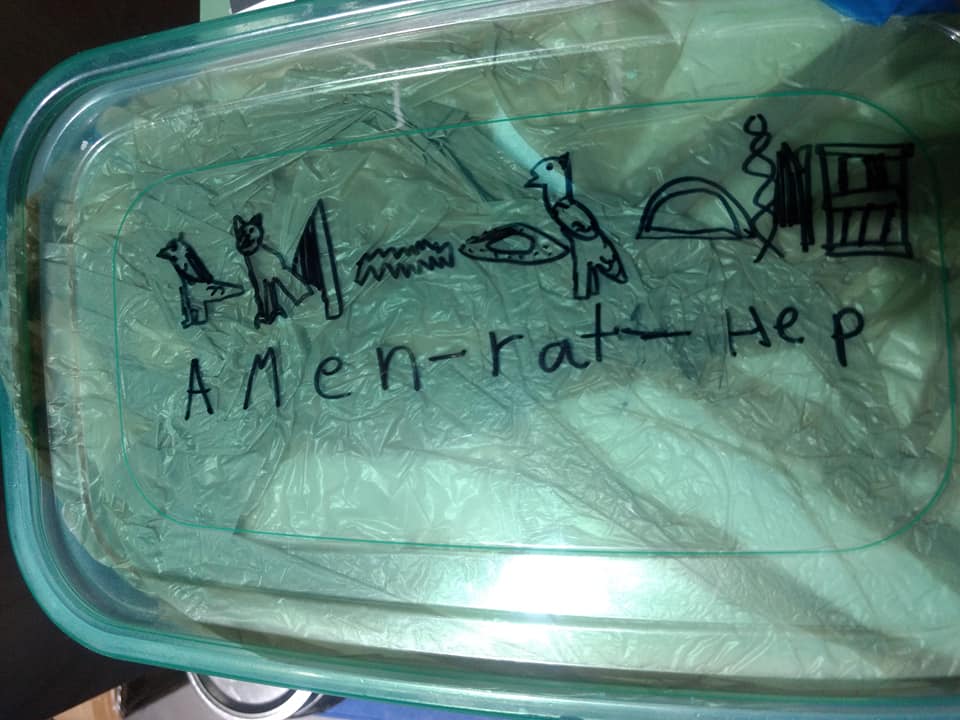
When we wrapped up our anatomy studies, the mummification process became a nice bridge into our archaeology unit. We used the Wonders of Creation series from MasterBooks.com. The Archaeology Book by David Down and The Geology Book by Dr. John D. Morris led beautifully into The Fossil Book by Gary Parker. We’re definitely going to continue through this series into Caves, Minerals, Oceans, Weather, and Astronomy as we move through the timeline to the middle ages.
I love multi-sensory learning whenever possible, so during all this we also tried our hands bringing our history studies to our taste buds. One of my favorite cookbooks to pull out during the ancient years is The Philosopher’s Kitchen. It’s full of ancient flavors that make use of modern kitchen routines so you can enjoy the taste of the times without slaving away. We have recipes we’ve attempted to make the way they would, but I’m content with learning to use the kitchen I have instead of trying to time travel. Kiddo found some easy kid recipes in various places and we also enjoyed some Mesopotamian sweet breads she made herself that were rather tasty. Cardimon and honey is a lovely flavor combination.
Another aspect to unit studies/ studying all disciplines through the timeline, is that we tried Spelling You See for the first time and used the Ancient (level F) package. Spelling You See was developed by a reading specialist who encourages identifying word patterns and color coding them. Married with dictation of an entire topical paragraph, this curriculum abandons the by rote memorization of a list of spelling words. I find this method useful, but we will also continue with our Spelling Workout books after we’ve completed all the lessons in this book, as spelling is a subject we’re going to have to continue to work on long after some of our peers have abandoned it as a subject. I’m ok with this, Kiddo tests gifted in most subjects but spelling is a struggle. We remind ourselves daily that we can do hard things (through Christ) and that it is ok to not be perfect at everything as long as we’re trying our best.
Adara by Gormley, God King by Williamson (we had already read Hittite Warrior years ago), and Days of Elijah by Noble were read as we continued our studies of the Old Testament as well as Herodotus. (Kiddo loved Days of Elijah, I tried to read it with her but I found the writing style very off putting, I honestly cannot remember if I finished it or not.) Kiddo re-read Bendick’s Herodotus & The Road to History, we both love all things Bendick. I wanted to re-read Herodotus’s book as the last time I had read it Kiddo was two or three, but time got away with me. We were knee deep in fractions because math may never be abandoned, no matter how many people die (we had four significant deaths this season), or how tired you may be. What kept our mind clear enough to finish our Singapore 4a&4B curriculum and get through Math-U-See Epsilon, was the fact that we were taking time to study God’s word daily. We weren’t just trying to incorporate theology in our homeschool, my husband was actually leading bible study every evening (and had been since the start of our marriage in 2020); and in addition to that, upon moving into our new house in 2021 we began using the Simply Charlotte Mason Scripture Memory System. I found a reasonably priced recipe box on Amazon and started adding index cards as per the instructions of the method (follow the link). Focusing on hiding God’s Word in your heart, opens the mind up for so much more, and in all the crazy we prayed for God to help us be good stewards of our brains and our time and the results have been delightful.
With all this Bible study, Kiddo requested to eventually study Aramaic and Hebrew and Koine Greek, but we decided to wait as we continue on our Latin studies. One thing at a time, and we still have some Latin books to complete.
Now, for the Greeks… The D’Aulaires have a lovely Greek Myths book. In addition to that, Kiddo read more books on Homer’s work than I can count. The highlight reel were repeat romps through the Mary Pope Osborn adaptation, Sutcliff’s Black Ships Before Troy and The Wanderings of Odysseus, and Lively’s In Search of a Homeland. She also read for the first time Aleta and the Queen, Flaxman’s The Iliad of Homer, and Colum’s Children’s Homer. By the time she reads Homer’s unabridged work, she’ll know the stories so thoroughly I’m hoping the poetry of it will shine through and delight her in ways that evaded me when I blindly trudged through it for the first time because I had no previous knowledge of context to work from. I had planned for us to read Edith Hamilton’s Mythology, but when you’re done, you’re done. So we’re saving Hamilton for the next time around, in four years.
Bendick’s Archimedes and the Door of Science as well as The Librarian Who Measured the Earth by Lasky are must haves. We have read them every time we’ve studied the Ancients and sometimes we pluck Lasky’s picture book up to read just for kicks.
Rome Antics by MacCauley was beautiful. It takes about ten minutes to read, but days to absorb if you want to go back and study all the architecture as well. I didn’t dwell on it too much as she’s already read Where Were the Seven Wonders of the Ancient World? and Where Is the Parthenon? (we did a hands on project with friends building the Parthenon out of marshmallows which was fun). While on the Who/What/Where series kick, she also read Where Is the Great Wall? We’ve studied ziggurats and pyramids and a number of other structures this year, and now that we are currently studying Rome, I’m going to have to collect my thoughts and make proper plans to lay the groundwork for a strong introduction to architecture. In the meantime, now that summer is here, we’re listening to the Rise of Rome on Wondrium, and plucking through our never ending reading list.
I’ll continue to update as we make our way through the last hundred years or so before Christ, through the New Testament, and onto the invasion of Britain. We already studied Pompeii and went to the museum exhibit with our co-op, and volcanoes were studied in passing while we raised money for the Pacific Rim Awana programs and made a homemade volcano during a friend-date at our house. (I think we may start a science club…)
(We got a taste of Asian mythology and folklore with some read alouds and picture books, but I think we will revisit them in a more heavy handed way when we study Marco Polo again. If you’re looking for titles, I recommend perusing everything by Demi as well as 101 Read-Aloud Asian Myths.)
This school year has been our most relaxing yet, despite the chaos of life, and we hope to continue this pattern in the years to come.
Instilling Financial Wisdom
Title: Stock Market Investing For Teens
Author: Myles West
ISBN: 9798416564322
Pages: 149
Theme Music: The FatRat Warrior Songs: Reminiscence
Ok, maybe the Theme Music was a little much, but I mainly listened to this while I read Myles West’s investment guide for teens and planned kiddo’s future. According to West, only 35% of kids 12-19 (as of 2021) had ever had a savings account, and though I agreed to read this book and leave an honest review in exchange for a free copy, I definitely sat and patted my back for having savings accounts for both my kids and choosing this particular title to review. I have always assumed helping children plan for their financial future was the norm, I did not realize how in the minority I was until this book.
While married to my oldest’s father, we suffered a lot of hardships, many that began and ended with financial irresponsibility and abuse. It was during those years that I realized how important it was to not just “agree” about money, but to understand when you are and are not speaking the same language when discussing money topics. It’s not enough to agree that it is “good to save,” questions like “how do you plan to save?” must also be answered accurately. Newsflash: “Win the Lottery” is not a good answer. Spending is a touchy subject too. Agreeing that bills should be paid on time is not the same thing as someone actually paying their bills on time, or even prioritizing those bills over their vices. And although I am grateful for the skills I learned while foraging for food in the woods when he kept grocery money from us so he could buy beer, that’s obviously not the place I want my kids to be in life. Ironically, I was reviewing financial books even then. I knew the “right” answers, but I didn’t know how to help my then spouse make the right choices. The new goal is to simply help my kids learn to make the right choices before they are married so they don’t find themselves acting like or married to someone who tackles money like my ex.
It’s not just enough to start a savings account, though, although that’s a great start. We talk a lot of about being a good steward of our finances in our house. As a homeschool mom, I have the opportunity to teach my kids all the inner workings of household management throughout the day while we tackle math, reading, history, and science. My oldest can now budget out and cook dinner once a week as part of her home economics, she’s eleven. She has been taught to save money for pets and their care and upkeep. We have a two year old puppy, a seven year old hermit crab, one year old Australian tree frogs, and she has set up a freshwater aquarium for a betta fish whose extra plant features she has to earn by doing the dinner dishes every night.
Even this is not enough.
Around 8th-9th grade I plan to add the Math-U-See Stewardship curriculum to our school days. When that happens, I’m also going to add West’s investing book to the required reading list.
As an adult, I’m familiar with most of what was discussed for Americans (West’s book also tackles actions available for Canadian citizens), so I read through the 149 page book in one sitting as soon as I took it out of its package. A teenager being exposed with the terminology and ideas for the first time will have to peruse it more thoroughly. Although West does an excellent job defining terms and laying out a thorough getting started guide, I would consider it just that––a guide to get started. A teen would (and should) take a great deal longer than a nine month old’s nap time to digest this book. It’s good stuff.
In addition to the well rounded and systematic way West approaches investing for the first time, I love how he also touches on volatile markets. Many adults pushing kids to invest don’t properly address the risk factor, but I think West handles it well. The risk is real, but these are things you look for…
The best part, West doesn’t act like his book is the end all be all of everything. In a household where our mantra continues to be “Education is a lifetime pursuit” you bet your britches I was delighted to read West write,” The more you know, the less likely you are to make mistakes. Your reading and thinking may also lead to improved investing techniques and performance.” He then continues to encourage his readers to learn about successful investors and firms as well as those who have failed. “[…]there is always more to learn…”
Thornton Burgess Nature Stories
A year ago today, I was reading Cinnabar the One O’Clock Fox by Marguerite Henry with my daughter. We were in the middle of studying American History and what better way to fit in a nature story for “school” than to add it to your history lessons. George Washington’s crafty fox was a good excuse, especially in February as Washington’s birthday lands on the 22nd. This year, we’re studying ancient history again, and while Kiddo tackles Herodotus, I’ve been reading The Adventures of Reddy Fox by Thornton Burgess to my son. (What foxy title will I be reading next February, I wonder?)
Since last year, I had a baby, bought a new house, my mother died, my niblings came to stay for two months, and though we kept on schooling––as homeschoolers are apt to do––we needed some calm. Calm came in the form of Thornton Burgess, an old childhood favorite of mine.
I grew up on little pocket paperback two-for-one-dollar deals from good ol’ Wally World. Most of those now sit on my kids’ shelves, being enjoyed by the next generation of bibliophiles. Among those paperbacks were Thornton Burgess Bedtime Stories. Each little paperback following the tales of a new anthropomorphized character: The Adventures of Old Man Coyote and The Adventures of Prickly Porky, to name a few.
Imagine my glee when I found a Thornton Burgess Nature Stories, short tales from the Smiling Pool where Grandfather Toad spends his days. Thoughtful anecdotes that teach children about different kinds of birds and how they nest, through stories about mischievous rabbits trying to spot them. Eels with wonder lust, who find romance… These stories are the perfect medicine for children who have lost a grandmother, a breath of fresh air when it is too sweltering to go to the park, a cozy ray of sunshine when it’s actually the dead of winter. I am determined to collect them all and read every single one of them to my children, even after they have grown too old. They are simple, there is no mistaking them for great literary works. But they are beautiful. Sometimes we all just need a little more of what is beautiful.
If you haven’t read these little gems to your children or grandchildren, the entire collection is free on kindle. As for me, I like collecting the old copies.
Thanksgiving 2020
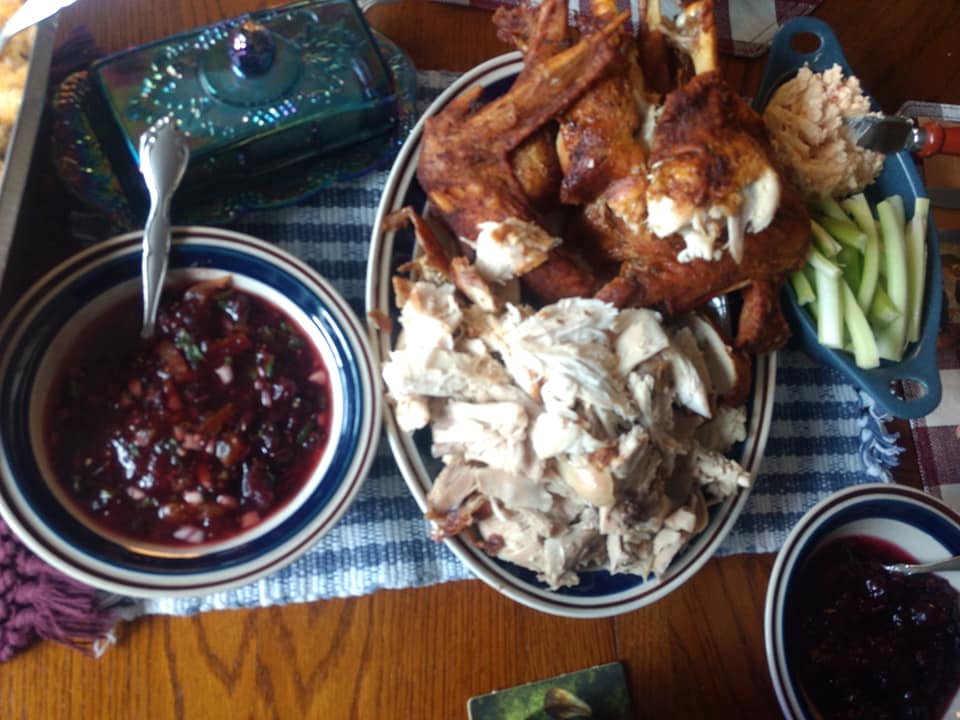
Thanksgiving is my favorite holiday. Pretty much always has been, because, well… FOOD. I love the food. I love the deep fried turkey, I love the dressing (which I call stuffing even though it’s never stuffed in anything because you don’t stuff that which you deep fry), my cranberry sauce (which is apparently somewhat unique and more of a salsa or relish, a blend of: wholeberry cranberry, cranberry sauce, orange marmalade, apple cider vinegar, chopped onion, chopped cilantro, chopped jalapeño, and a sprinkle of orange peel). For dessert, I prefer my marble pumpkin cheesecake over pumpkin pie, some years I’ve made Pumpkin Rolls — another bite of perfection. And I’ve always loved that above all, Thanksgiving is about being thankful to God for what we already have and the burden of gifts are not involved.


This year, our history studies coincided perfectly with the holiday: We studied William Bradford, the Mayflower, and the Pilgrims.
William Bradford: Pilgrim Boy by Bradford Smith is a gentle middle grade chapter book that tells the story of the Puritan governor William Bradford. From his childhood with his grandfather, through his schooling, to Holland, and across the sea to lead a new colony to religious freedom. Understanding his story helps flesh out understanding for King James, the King James Bible, British politics, and early America. Without knowing William Bradford, do you really know what the Pilgrims were thankful for?
During the weeks I read this aloud, Kiddo was reading a book called Pilgrim Stories by Margaret Pumphrey, published by Beautiful Feet. We caught one error in the book, at the beginning the writers seem to be confused about Mary Tudor and Mary Stuart. We revisited our Rhyming History of Britain and memorized a few stanzas to ensure Kiddo didn’t remember the wrong information. It helped to clarify how James VI of Scotland became James I of England. Memorizing rhymes is one of our favorite activities (so much so that we spent November 5th celebrating Guy Fawkes Day memorizing the infamous poem… Remember, remember the fifth of November, the Gunpowder Treason and Plot…).
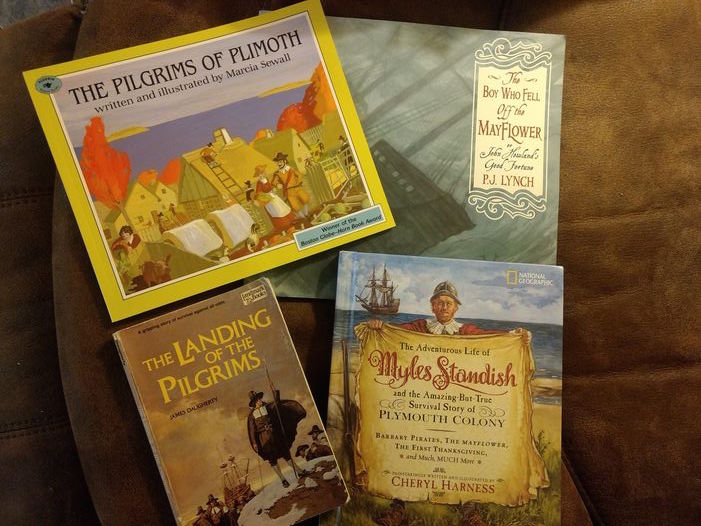
I read The Landing of the Pilgrims as a child, I really love the old Landmark Books and make a point of collecting them, and this was another one I made Kiddo read on her own this time. I find at this age when I can assign independent reading, instead of me reading out loud less, we just cover twice as many books per topic.
My husband read The Adventures of Myles Standish out loud and we both marveled over the beauty of the timeline across the bottom of Harness’s lovely biography (so much so, we started stocking up on other biographies in the same series for the future).
P.J. Lynch’s The Boy Who Fell Off the Mayflower might be one of my all time favorite Thanksgiving books. The illustrations are simply beyond gorgeous and take my breath away. Lewis Buzbee talks about children’s picture books in The Yellow-Lighted Bookshop and how they’re meant to be read over and over again, by children and adults alike… this is one of those books, a perfect work of art I am pleased to own and revisit. I paid full price for it (something I rarely do, as the majority of my books are bought used), and have no regrets.

Thanksgiving Day, Kiddo insisted on dressing like a Wampanoag child. She was very disappointed that not a single article of clothing her dress up basket included authentic Wampanoag attire. Instead she’s wrapped in a touristy Navajo blanket sent to us for our donations to some reservation school or another. (My mother spent much of her childhood near the Navajo and they are the one tribe we feel a familial attachment to despite a lack of native blood. I grew up singing bible school songs in Navajo, as she was taught.) I know some in the world would consider this cultural appropriation at the worst or at best possibly roll their eyes at us, but we study these things and she dresses up out of the highest level of respect, empathy, and intrigue. This is childhood, children learn through stories and play.
By afternoon, she’d shed half her costume and settled into the life of Squanto while I read the Mayflower Papers over dessert.


Education is a lifetime pursuit and I’m thankful for the opportunity to share my love of learning through the discipleship of homeschooling.
The Atchafalaya Basin
One of the beauties of homeschooling is the ability to pick up and take school into the world. We love field trips. I realized recently that I always refer to them as field trips and not vacations, because each change of scenery for us offers a new learning experience, and we never stop working on math and spelling.

So when we had the opportunity to venture out into the swamplands of Louisiana, we packed up our school work and went.
Although our family’s main homeschooling style relies on the Classical model by choice, by nature after growing up in the GT program of public schools, I’m a Unit Study girl. So when headed to the Atchafalaya we watched a National Geographic youtube documentary on the basin and loaded up on picture books.
Jim Arnosky is a long time children’s book favorite of mine. He is the author of the Crinkleroot character, possibly my favorite children’s character of all time, and truly my go-to when looking for any sort of nature themed studies. I was pleased to discover I already owned copies of All About Turtles and All About Alligators, perfect for swamplands. We picked these up years ago and I just love the whole series. They’re perfect for little nature lovers to peruse in their free time when they are excited about a particular animal or another, or for building unit studies on a particular ecosystem like we did when we went to the swamp.
The One Small Square series by Donald M. Silver and Patricia J. Wynne is another favorite. Instead of individual species and their place in the world, this series starts with the ecosystem and defines what is in it. From the cypress knees and ferns to the bacteria and fungi, Swamp talks about all the different layers of life that make up each square inch of swamplands, including diagrams of life at a cellular level… “A carpet of sphagnum moss covers this floating peat island. The moss’s tangled leaves have special hollow cells that soak up and hold water…” Swamp also covers mangrove swamps and the differences between the two.
Homeschooling is such a blessing and it was so exciting to not just read about the environment, but go and––literally––put our hands in it. I am thankful to God every day for the adventure of educating my kiddo.
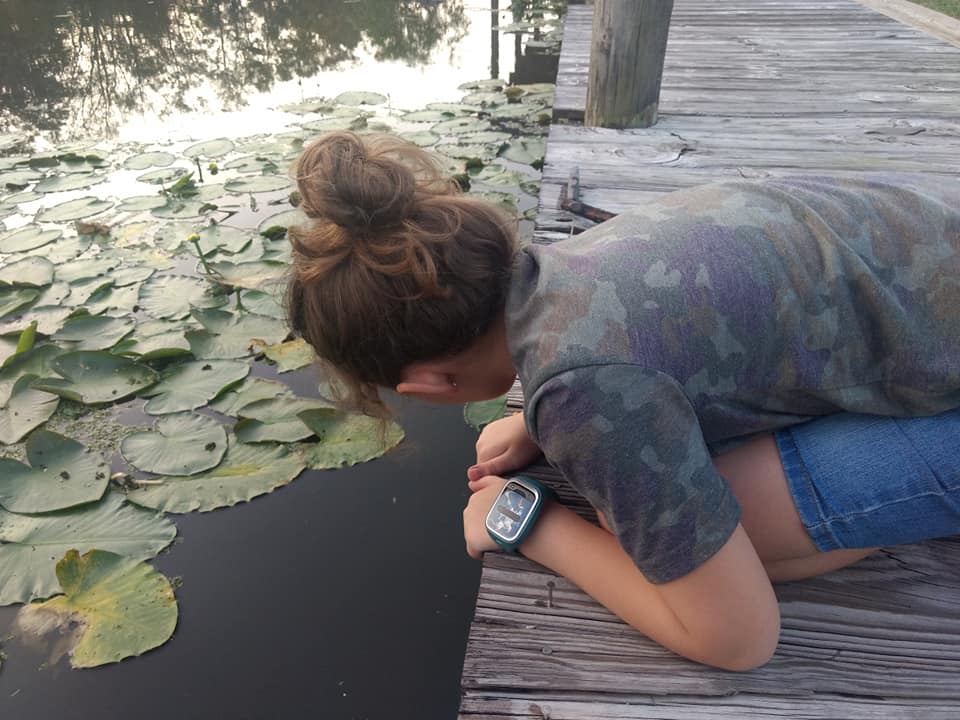

Mysteries of History Part Three: Roanoke
The world is full of things we’ll never know and one thing I do know is that the more I learn, the more I realize I don’t know.
As a child, the story of Roanoke was glossed over in history classes. It maybe earned itself a whole paragraph in a textbook… The colonists disappeared, most likely they were either slaughtered or absorbed by Native tribes. End of story. Now let’s talk about Jamestown and Pocahontas.
Wait, what?! That’s it!?
Jane Yolen’s picture book Roanoke addresses all the theories and just how big a mystery it actually is quite nicely, which I appreciate for my kid. At least she’s been given a bigger bit of bait than I had at that age. As a lifetime sucker for anything written by Jean Fritz, we’re also reading The Lost Colony together, it’s longer and one usually tackled by slightly older kids whereas Yolen’s picture book can be read in one sitting.
As far as information and writing style go, I prefer Jean Fritz––every time––and especially this time. Jean Fritz is my go to for all kids and young adult history books. We have a pretty extensive Fritz collection and still aren’t close to owning all the author’s work. I was so pleased to add The Lost Colony to our library, which in addition to beautiful illustrations, included all the most recent theories (as of 2001) and a summarization of Lee Miller’s Roanoke: Solving the Mystery of the Lost Colony.
I read Lee Miller’s book and found it completely enthralling. As a homeschool family, we pick up and take our studies pretty much everywhere, and the week of Roanoke we had the luxury of spending on the Atchafalaya Basin. The only thing that could have been more perfect would have been if we had been in the Virginia and North Carolina swamps and beaches instead of the Louisiana ones––but the ambiance for the unraveling of a sixteenth century crime was perfect.
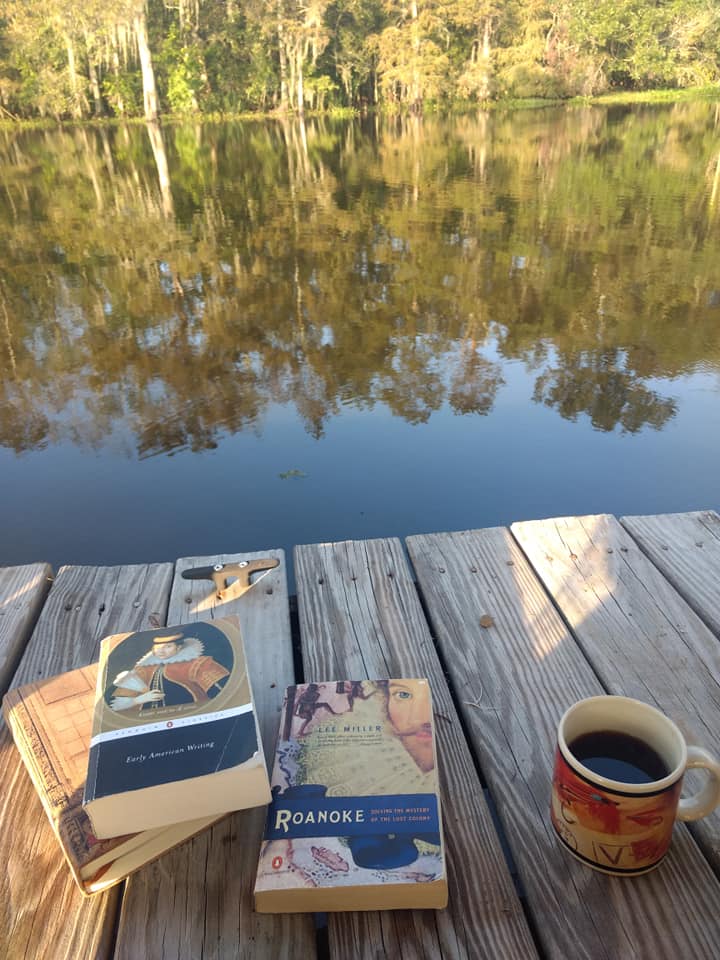
The book truly had me on the edge of my seat, due largely because of content. The writing style, which annoyed many reviewers on Goodreads, was superfluous at times, but I got the sense that it was the genuine excitement of the author jumping full swing into storytelling mode. I find the premise she suggested not only possible, but plausible based on her presentation of evidence. It’s a great book to read to get a big picture view of both sides of the pond when it comes to early American history. Too many books seem to focus on the colonies or Europe, but rarely truly show what is happening on both sides of the globe at the same time during the era.
Miller brings everything back to Elizabeth I’s Spymaster, so naturally I had to find out if her claims could be substantiated. Up next, my findings in Stephen Budiansky’s Her Majesty’s Sypmaster: Elizabeth I, Sir Francis Walsingham, and the Birth of Modern Espionage.
Mysteries of History, Part Two: The Americas
From what I can tell from Felipe Fernández-Armesto’s Goodreads biography and résumé, the man is half journalist and half historian. Perhaps, that’s why I enjoyed his writing. He’s perhaps a better journalist than any writing for the papers these days (always pointing out his own biases rather than writing opinion pieces as fact) and keeps his research assignments to the point instead of meandering in and out of his feelings (which I’ve noticed modern-day scholars doing a lot of lately). I could be wrong about him as a whole, he has a rather lengthy list of books and I have only read two of them. But what I have read, I have loved.

The Americas: A Hemispheric History has an average star rating of 3.25 on Goodreads. I gave it 5 stars. Most of the complaints seem to be that he’s not a specialist in his field and wrote too general a book––which I found incredible that he took so much history and covered it so well in two hundred pages––or, that he used words and language people didn’t understand (apparently, if you’re a journalist, you’re doomed to two syllable words forever?). The book did tackle a very broad scope of history and condensed it to a cozy mystery length, but the fact that he did it without missing major broad strokes, still telling the stories of the North and South Americas without skipping things your average high school student should know about this hemisphere but rarely does… I found it impressive.
By no stretch of the imagination is The Americas an end all be all. It is a jumping off point for people who love to learn. It’s a book that identifies all the major players textbooks are required to mention, and a few they fail to, during the times of exploration and conquest. He poses a few philosophical questions about viewpoints so you know when there is a conflict of perspective so you can go forth and research from there. There are many things Fernández-Armesto says that I don’t entirely agree with, but I liked that he made his biases clear and actually referred to them as biases. I would much rather read differing viewpoints and discuss topics outside of an echo chamber than not, but I also greatly appreciate when people are able to step back and say, this is my bias rather than infer that anything coming from their mouth (or pen) is a universal truth simply because that’s how they feel.
For instance, for a historian, Fernández-Armesto seemed to articulate a very laid back view of how all history is just a matter of perspective, not fact. This made for great storytelling, as he presents all sides of a situation, but as a Christian and self-taught scholar, I do believe in the existence of universal truths. I believe modern society as a misguided view on which things are universal truths/ facts and which are not due to the hot button phrase “my truth.” I tell my kiddo, having empathy for someone’s perspective, understanding where they are coming from and how they got the ideas they have, does not make their ideas correct. Those who do not know history are doomed to repeat it, and those who do are doomed to watch everyone else repeat it, but I’d still rather go through the world with my eyes wide opened. I still want to go through the world with an ear that hears.
Maybe that’s why I find Fernández-Armesto’s writing style approachable and easy, when others have not. He doesn’t say all the politically correct things. He doesn’t perpetuate the required narrative, but shares the facts he has collected along with his own ideas (and is very clear about what are ideas). I pick his books up when I’m starting an in-depth study as an armchair book to whet my appetite for the topic. I’d recommend this particular one as a pre-requisite title before diving into source documents. I ordered a couple books he cited as I was reading, and even more as I read his bibliographical essay at the end of the book. I love that style of works cited. Is it a professional format used by scholars? No. Is it fantastic for a people in their homes wanting to know what books the author read to come to the conclusions he did? Yes. And honestly, how often do you get a chance to read someone’s bibliography for pleasure?
I’m excited, as always, to know more today than I did yesterday… and more tomorrow than today. I’m excited, as always, to find out all the things I don’t know, and learn them––only, of course, to find I don’t know even more things. I think this is why I “eat history for breakfast,” as a friend of mine once said, because I’m a detective always on the hunt for information, so I can understand the world God made a little better.
Do Fish Spend Wisely?

Title: Save Money and Spend Wisely During and After the Economic Crisis
Author: Dana Wise
It’s been awhile since I regularly read books sent to me by the author or publisher in exchange for an honest review. It used to be my favorite past-time, and lately my number one priority has been homeschooling.
Honestly, I agreed to read this book because I’m a sucker for cute marketing and the author sent the request titled “Do Fish Spend Wisely?” with this jpeg:

I also enjoy supporting small businesses, which include the small presses within the publishing industry. This book is from a publishing house called Ready Set Agile! based out of Slovakia and I’m interested to see how they grow. I always try to support American businesses first, but that ideology does not limit me (thankfully) to supporting American businesses only. My true passion is for small businesses and the global market of today gives us an opportunity to support small businesses in other countries as well.
The author sent me the request because I used to review financial books for a consultant website and I have posted excerpts from most those reviews on Amazon and Goodreads. I have an outdated degree in marketing and management and took more accounting courses in college than some accounting majors, but most of what I learned was from my parents and how they ran their household, helping run a small business for nearly a decade, and life experience. I am not the target audience.
The target audience for this book would be someone who knows next to nothing about making wise financial choices. The advice is good and valid advice, but nothing you wouldn’t find in existing financial guides. It isn’t “pandemic” specific, but definitely has decent tips for surviving any recession.
It’s short and to the point, reading more like a series of blog posts, which is typically how the general public acquires information these days, so I understand why it would be helpful that it is written this way. It would be an appropriate graduation gift for that high school senior you don’t know very well and aren’t sure what they like or need. Every eighteen year old needs to go out into the world with some handy money tips.







